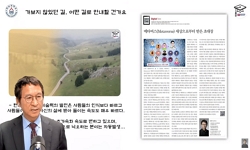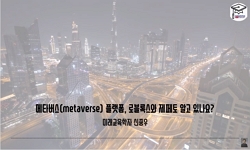(Background and Purpose) Due to the development of science and technology and the expansion of media, platforms where individuals act as subjects are actively expanding. In addition, as non-face-to-face communication became a social phenomenon, active...
http://chineseinput.net/에서 pinyin(병음)방식으로 중국어를 변환할 수 있습니다.
변환된 중국어를 복사하여 사용하시면 됩니다.
- 中文 을 입력하시려면 zhongwen을 입력하시고 space를누르시면됩니다.
- 北京 을 입력하시려면 beijing을 입력하시고 space를 누르시면 됩니다.

A study on usability analysis of experimental media in a metaverse environment - Focus on the cases developed by public institutions -
한글로보기부가정보
다국어 초록 (Multilingual Abstract)
(Background and Purpose) Due to the development of science and technology and the expansion of media, platforms where individuals act as subjects are actively expanding. In addition, as non-face-to-face communication became a social phenomenon, active use of virtual space began to occur. This method of communication in human society in virtual space has led to expectations of positive growth in experimental research and possibilities of various metaverse platforms. Against this background, interest in Metaverse is increasing among governments and public institutions. Accordingly, the purpose of this study is to study the actual status of each analysis question based on the established case of the Metaverse platform, which is focusing on development according to the phenomenon of the times, and to suggest the direction of the Metaverse space in the future. (Method) In addition, based on the expansion of virtual reality in response to changes in the digital ecosystem, we conduct a theoretical review of the main concepts and types of the metaverse, and then derive modules of strategic spatial experience elements and innovative design modules of the metaverse space. And based on this, comprehensive conclusions are drawn through Metaverse's actual survey and analysis of cases developed in public institutions. (Results) Accordingly, the analysis results derived from this study, as previously discussed in the research background, reflect on the active research and development reports of the government and public institutions on Metaverse, and continue to make efforts for user convenience and achieve attractive visual effects. Development research for this has been confirmed. However, the lack of user participation in virtual space is confirmed to be due to the limitations of current technological development and adaptability to heterogeneous virtual environments, and it is confirmed that continued interest in realistic content and innovative development of development environments are tasks that must be achieved in the future. (Conclusions) As mentioned above, research and development on technical aspects and practical usability in the field of realistic content such as Metaverse are continuously being conducted in the government and public institutions. However, it is somewhat difficult to actively utilize and popularize the virtual space Metaverse. The actual possibility of active use and the physical or technical environment of the medium are lacking. Accordingly, research and research on user experience should be conducted continuously. Therefore, it appears that research on usability will continue to be necessary for smooth communication between users and service aspects. In addition, among the characteristics of Metaverse, as a highly interactive media based on immersion, the functional composition based on the usability of the platform plays a key role in connecting users and media, and in this respect, technical media and As devices develop, the utilization and development of virtual space will further accelerate.
동일학술지(권/호) 다른 논문
-
- 한국공간디자인학회
- 이은경
- 2023
- KCI등재
-
A Study of Middle School Library Remodeling Design through User Participation
- 한국공간디자인학회
- 손주휘
- 2023
- KCI등재
-
- 한국공간디자인학회
- 황정석
- 2023
- KCI등재
-
A Case Study on the Nighttime Landscape Lighting of Architectural, Road, and Park
- 한국공간디자인학회
- 정원영
- 2023
- KCI등재





 KCI
KCI KISS
KISS






